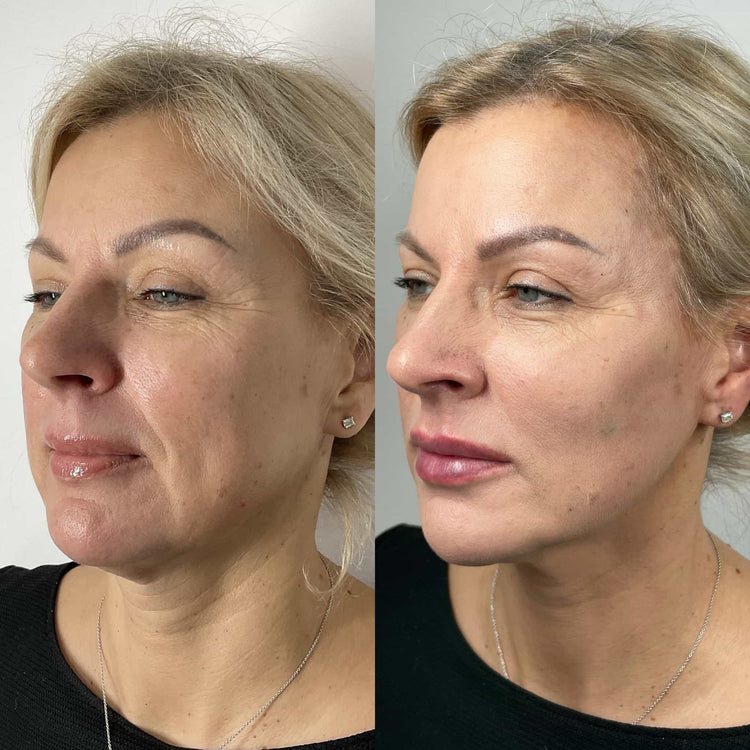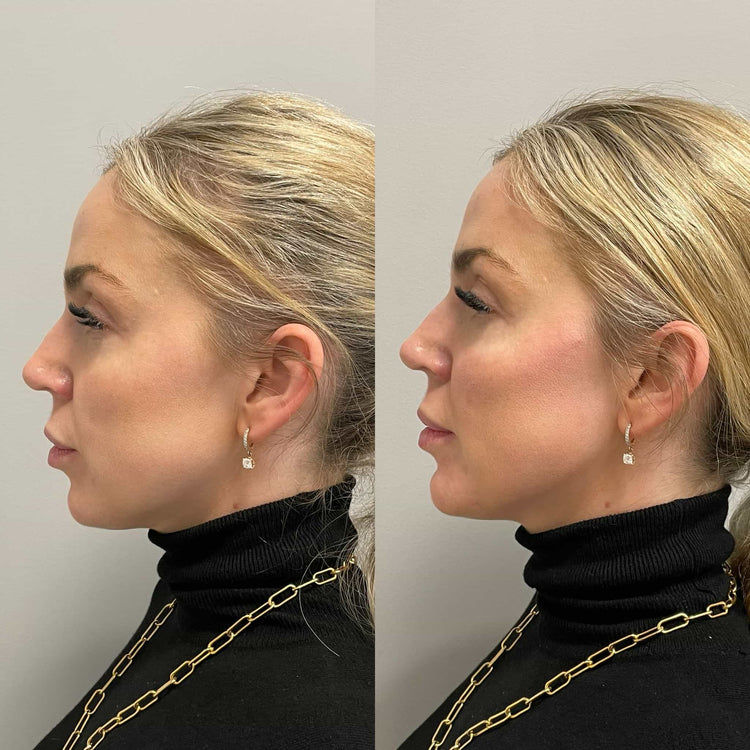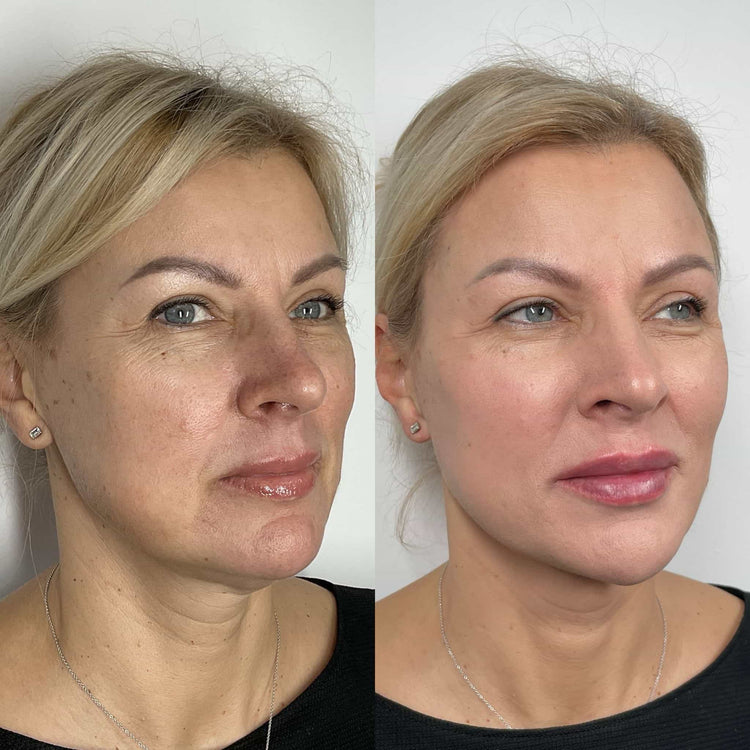Risks
Liquid facelifts, though often touted as a less invasive alternative to surgical procedures, still carry potential risks and side effects that should be carefully considered.
Swelling and Bruising
Like any medical procedure, liquid facelifts involve injecting substances into the skin, which can lead to complications. Swelling and bruising are common side effects, typically resolving within a few days or weeks. However, more serious risks include infection, allergic reactions, vascular occlusion (blockage of blood vessels), and asymmetry in facial appearance. It’s crucial to consult with a qualified and experienced practitioner who thoroughly assesses your medical history and understands the potential risks involved.
Redness and Inflammation
Redness and inflammation are common side effects of a liquid facelift, often appearing immediately after the procedure and lasting for a few days to weeks. These reactions are typically mild and manageable but can be more pronounced in some individuals.
More serious risks, though less common, include infection, allergic reactions, vascular occlusion (blockage of blood vessels), and asymmetry in facial appearance.
Infection
Infection is a potential risk associated with any procedure involving injections into the skin. With liquid facelifts, bacteria can enter the injection site, leading to inflammation, pain, and possibly requiring antibiotics or other treatments.
Allergic reactions to the injected substances are another concern. These can range from mild itching and redness to more severe reactions like swelling of the face or throat, which may require medical attention.
Allergic Reaction
Vascular occlusion, a serious complication, occurs when injected material blocks blood vessels, potentially leading to tissue damage. It’s crucial for practitioners to have expertise in avoiding this risk during the procedure.
Asymmetry can result from uneven distribution of injected materials, potentially leaving one side of the face appearing different from the other. This risk highlights the importance of choosing an experienced practitioner who can ensure balanced and natural-looking results.
Asymmetry
Liquid facelifts, though often touted as a less invasive alternative to surgical procedures, still carry potential risks and side effects that should be carefully considered.
Like any medical procedure, liquid facelifts involve injecting substances into the skin, which can lead to complications. Swelling and bruising are common side effects, typically resolving within a few days or weeks. However, more serious risks include infection, allergic reactions, vascular occlusion (blockage of blood vessels), and asymmetry in facial appearance. It’s crucial to consult with a qualified and experienced practitioner who thoroughly assesses your medical history and understands the potential risks involved.
- Infection is a potential risk associated with any procedure involving injections into the skin. With liquid facelifts, bacteria can enter the injection site, leading to inflammation, pain, and possibly requiring antibiotics or other treatments.
- Allergic reactions to the injected substances are another concern. These can range from mild itching and redness to more severe reactions like swelling of the face or throat, which may require medical attention.
- Vascular occlusion, a serious complication, occurs when injected material blocks blood vessels, potentially leading to tissue damage. It’s crucial for practitioners to have expertise in avoiding this risk during the procedure.
- Asymmetry can result from uneven distribution of injected materials, potentially leaving one side of the face appearing different from the other. This risk highlights the importance of choosing an experienced practitioner who can ensure balanced and natural-looking results.
Lumps or Nodules
Liquid facelifts, though often touted as a less invasive alternative to surgical procedures, still carry potential risks and side effects that should be carefully considered.
Like any medical procedure, liquid facelifts involve injecting substances into the skin, which can lead to complications. Swelling and bruising are common side effects, typically resolving within a few days or weeks. However, more serious risks include infection, allergic reactions, vascular occlusion (blockage of blood vessels), and asymmetry in facial appearance. It’s crucial to consult with a qualified and experienced practitioner who thoroughly assesses your medical history and understands the potential risks involved.
Redness and inflammation are common side effects of a liquid facelift, often appearing immediately after the procedure and lasting for a few days to weeks. These reactions are typically mild and manageable but can be more pronounced in some individuals.
More serious risks, though less common, include infection, allergic reactions, vascular occlusion (blockage of blood vessels), and asymmetry in facial appearance.
Infection is a potential risk associated with any procedure involving injections into the skin. With liquid facelifts, bacteria can enter the injection site, leading to inflammation, pain, and possibly requiring antibiotics or other treatments.
Allergic reactions to the injected substances are another concern. These can range from mild itching and redness to more severe reactions like swelling of the face or throat, which may require medical attention.
Vascular occlusion, a serious complication, occurs when injected material blocks blood vessels, potentially leading to tissue damage. It’s crucial for practitioners to have expertise in avoiding this risk during the procedure.
Asymmetry can result from uneven distribution of injected materials, potentially leaving one side of the face appearing different from the other. This risk highlights the importance of choosing an experienced practitioner who can ensure balanced and natural-looking results.
Side Effects
Liquid facelifts have gained popularity as a less invasive alternative to traditional surgical procedures for facial rejuvenation. However, it is crucial to understand that this treatment carries potential risks and side effects. Like any medical intervention involving injections, liquid facelifts can lead to complications ranging from mild to serious.
Temporary Numbness
Temporary numbness is a common side effect of a liquid facelift, particularly around the injection sites. This occurs because the anesthetic used during the procedure numbs the nerves in the area. The numbness typically subsides within a few hours or days after the treatment as the anesthetic wears off.
Changes in Skin Texture
Liquid facelifts involve injecting substances into the skin to improve facial contours and appearance. While generally considered less invasive than surgical procedures, they can still lead to changes in skin texture.
Redness, swelling, and inflammation are common side effects that typically subside within a few days to weeks. However, in some cases, these reactions can be more persistent or severe, leading to temporary alterations in skin texture, such as increased sensitivity or unevenness.
Another potential change is the formation of small bumps or nodules at the injection sites. These are often temporary and resolve on their own over time. In rare instances, prolonged inflammation or scarring can occur, resulting in more noticeable changes to skin texture.
It’s essential to discuss any concerns about potential changes in skin texture with a qualified practitioner before undergoing a liquid facelift. They can assess your individual skin type and medical history to determine the likelihood of such effects and provide advice on minimizing risks.
Uneven Results

Liquid facelifts, though often touted as a less invasive alternative to surgical procedures, still carry potential risks and side effects that should be carefully considered.

Like any medical procedure, liquid facelifts involve injecting substances into the skin, which can lead to complications. Swelling and bruising are common side effects, typically resolving within a few days or weeks. However, more serious risks include infection, allergic reactions, vascular occlusion (blockage of blood vessels), and asymmetry in facial appearance. It’s crucial to consult with a qualified and experienced practitioner who thoroughly assesses your medical history and understands the potential risks involved.
- Infection is a potential risk associated with any procedure involving injections into the skin. With liquid facelifts, bacteria can enter the injection site, leading to inflammation, pain, and possibly requiring antibiotics or other treatments.
- Allergic reactions to the injected substances are another concern. These can range from mild itching and redness to more severe reactions like swelling of the face or throat, which may require medical attention.
- Vascular occlusion, a serious complication, occurs when injected material blocks blood vessels, potentially leading to tissue damage. It’s crucial for practitioners to have expertise in avoiding this risk during the procedure.
- Asymmetry can result from uneven distribution of injected materials, potentially leaving one side of the face appearing different from the other. This risk highlights the importance of choosing an experienced practitioner who can ensure balanced and natural-looking results.
Liquid facelifts have gained popularity as a less invasive alternative to traditional surgical procedures for facial rejuvenation. However, it is crucial to understand that this treatment carries potential risks and side effects. Like any medical intervention involving injections, liquid facelifts can lead to complications ranging from mild to serious.
Migraines or Headaches

Liquid facelifts, though often touted as a less invasive alternative to surgical procedures, still carry potential risks and side effects that should be carefully considered.
Like any medical procedure, liquid facelifts involve injecting substances into the skin, which can lead to complications. Swelling and bruising are common side effects, typically resolving within a few days or weeks. However, more serious risks include infection, allergic reactions, vascular occlusion (blockage of blood vessels), and asymmetry in facial appearance. It’s crucial to consult with a qualified and experienced practitioner who thoroughly assesses your medical history and understands the potential risks involved.
Redness and inflammation are common side effects of a liquid facelift, often appearing immediately after the procedure and lasting for a few days to weeks. These reactions are typically mild and manageable but can be more pronounced in some individuals.
More serious risks, though less common, include infection, allergic reactions, vascular occlusion (blockage of blood vessels), and asymmetry in facial appearance.
Infection is a potential risk associated with any procedure involving injections into the skin. With liquid facelifts, bacteria can enter the injection site, leading to inflammation, pain, and possibly requiring antibiotics or other treatments.
Allergic reactions to the injected substances are another concern. These can range from mild itching and redness to more severe reactions like swelling of the face or throat, which may require medical attention.
Vascular occlusion, a serious complication, occurs when injected material blocks blood vessels, potentially leading to tissue damage. It’s crucial for practitioners to have expertise in avoiding this risk during the procedure.
Asymmetry can result from uneven distribution of injected materials, potentially leaving one side of the face appearing different from the other. This risk highlights the importance of choosing an experienced practitioner who can ensure balanced and natural-looking results.
Liquid facelifts, though often touted as a less invasive alternative to surgical procedures, still carry potential risks and side effects that should be carefully considered.
Like any medical procedure, liquid facelifts involve injecting substances into the skin, which can lead to complications. Swelling and bruising are common side effects, typically resolving within a few days or weeks. However, more serious risks include infection, allergic reactions, vascular occlusion (blockage of blood vessels), and asymmetry in facial appearance. It’s crucial to consult with a qualified and experienced practitioner who thoroughly assesses your medical history and understands the potential risks involved.
- Historical Perspectives On Non-Monogamous Practices - August 3, 2025
- Gummy Smile Treatment – Gum Contouring Near Peaslake, Surrey - August 1, 2025
- Gummy Smile Treatment – Gum Contouring Near Burstow, Surrey - July 30, 2025
